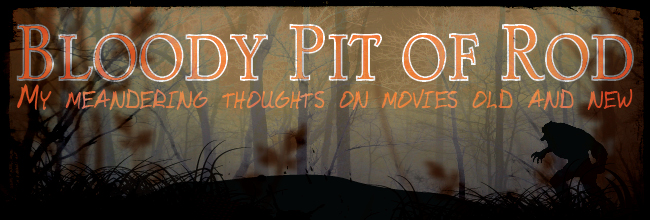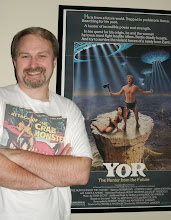Turner Classic Movies recently showed one of the
increasingly rare films directed by Anthony Mann that I had yet to see. Of
course this thrilled me because I have yet to see any film directed by Anthony Mann
that was not at least very good. He's one of those guys back during the days of
the studio system who seemed to be able to move comfortably between genres and
produce good films no matter what was asked of him. Oddly, this movie was being
shown on TCM not because of the Mann pedigree
but because it was produced by the great William Cameron Menzies. Now
I've been a fan of William Cameron Menzies ever since I discovered who he was (andI've even talked about him here on the blog briefly before) but I'm going to
focus on this film from the perspective of being an Anthony Mann film.
THE BLACK BOOK (1949) is also known under the title REIGN OF
TERROR and focuses on the rise of Robespierre during the French Revolution and
his attempt to install himself as the country's dictator. The cast includes
Richard Basehart as Robespierre and Robert Cummings as his foil. The film
follows the broad outline of the historical events but plays fast and loose
with details, as you might expect from Hollywood .
Villain Robespierre takes hero Charles D'Aubigny (Cummings) into his confidence
when the dastardly scoundrel loses his little black book. But this isn't a list
of potential dates with Parisian floozies! This black book is filled with the
damning evidence that keeps the ambitious politician's rivals fearful of him
and without it Robespierre's chances of becoming the next ruler of France is over.
The film very quickly becomes a fast and smart chase story with D'Aubigny in
constant mental and physical battle with various groups as he tries to maintain
his cover identity (which is keeping him safe from Robespierre's people) and
trying to prove his real identity to those opposed to the scheming and powerful
man while he frantically hunts for the book that will save both him and his
beloved country.
This movie is tight, intelligently moving from scene to scene
so fluidly that it's 90 minutes seem more like 60. Mann uses tight shots to
hide the relative poverty of the production which was pulled together by Menzies
get more use out of the sets built for the box office bomb JOAN OF ARC (1948).
Mann cleverly frames most of his images so that the foreground provides
information that adds to the main action taking place in the middle of the
screen. The cinematography is incredible using light and shadow to great effect
exactly as was becoming the standard in Noir crime films of the era. He and
Menzies also use some effective back projection to increase the number of
extras in crowd shots and to, along with smart sound design, give the often
cramped sets much more depth.










.jpg)


No comments:
Post a Comment